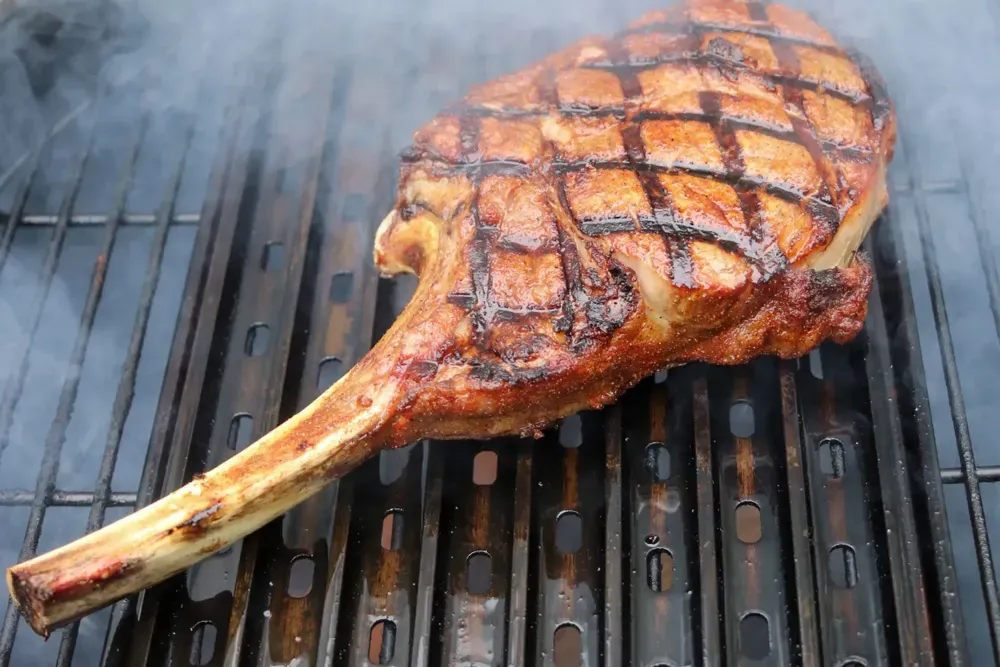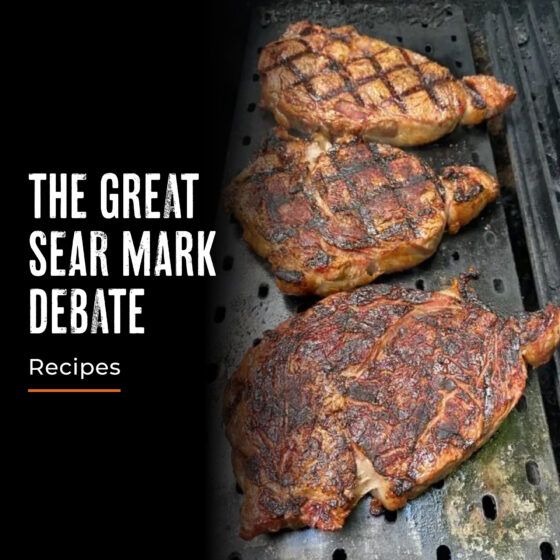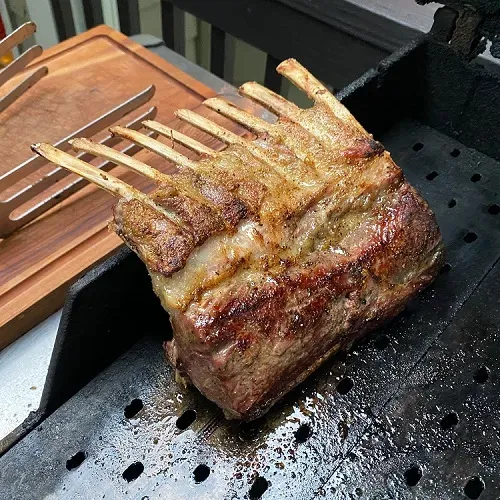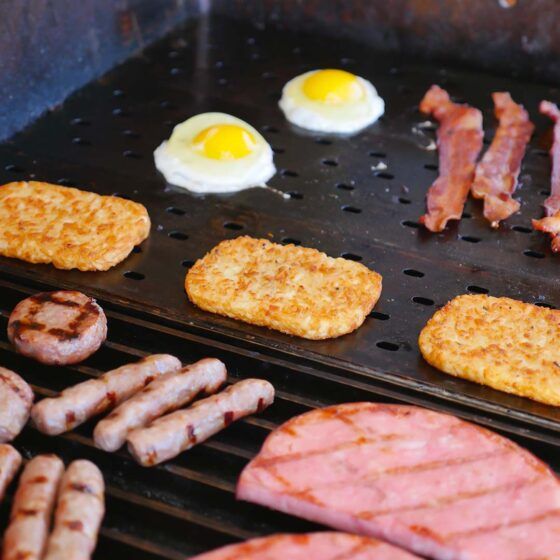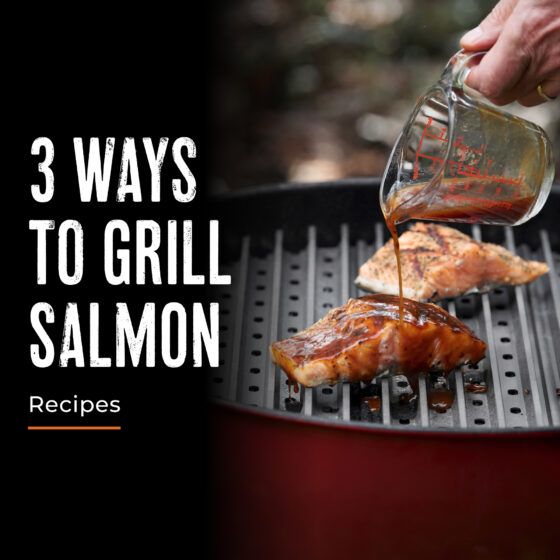This blog post is dedicated to grilling your best steaks with GrillGrates, and specifically dialing in that perfect sear for your taste and style of cooking. I also want to address recent articles from Meathead of AmazingRibs.com about sear marks. Read Meathead’s full article here. Meathead has been a friend of GrillGrate and mine personally for over 10 years. We’ve spent many an evening around a grill or a bar! I always enjoy my friend Meathead but I don’t always agree with him!
The Great Sear Mark Debate
Are sear marks over-rated? Are they just eye candy? In the world of food photography there is no debate… sear marks are sexy. From meat department flyers to social media posts, sear marks rule.
The debate is about flavor. Pundits such as Meathead decry sear marks as “superficial branding like freckles on Lindsay Lohan’s face”. Meathead goes further to say that “the diamond shapes between the marks are tan, boring meat full of unrealized flavor potential.” I respectfully disagree.

3 Steaks, 3 Tastes. Top: traditional sear marks. Middle: “The Ruth’s Chris Kiss” – grill on the rails, finish on the flat side (about 30 seconds). Bottom: full sear from harder flat side searing (about 60 seconds).
The debate between sear marks and an overall sear is that you get more flavor from the browning effect called the Mailliard Reaction when the entire steak is deep brown, not cross hatched with sear marks. That is a matter of opinion and taste. Browning from the Mailliard Reaction happens at temperatures as low as 300°F. Most of us grill steaks at twice those temperatures. The Maillard Reaction is happening in contact areas that create sear marks as well as non-contact areas from hot air convection around the steak. Differential browning creates differential flavors. Think of it as two layers of flavor not one. For a deeper dive on creating sear marks with GrillGrates read my 2012 blog post.
Here at GrillGrate we believe sear marks matter, not just because they are sexy, but because they are flavor bars and equally important, they are indicators of how evenly heat is being transferred to the food up the raised rails. With GrillGrates, sear marks are the same color across the entire steak which translates to the same amount of heat greeting the food. This results in a more tender and juicy steak. Great steak flavor is not just skin deep! If you like a bite of char on your steaks, dark sear marks are for you! I would not try that with an overall sear.
So, what about the restaurants that Meathead holds up as an example of perfectly seared steaks? First, they have equipment that most of us do not have in our backyards—a gas powered broiler called a ‘salamander’ that has the flame above the meat not below it. This allows them to sear without charring or flare-ups. Second, most steakhouses pre-cook their steaks to desired temperatures and hold them until an order comes in. That medium rare steak is already medium rare from a warming oven and all it requires is a quick hit under the flame (or on a hot griddle) to sear off the exterior. So how do we replicate that at home on our gas or charcoal grill? I call it the Ruth’s Chris Kiss.
Introducing the Ruth’s Chris Kiss
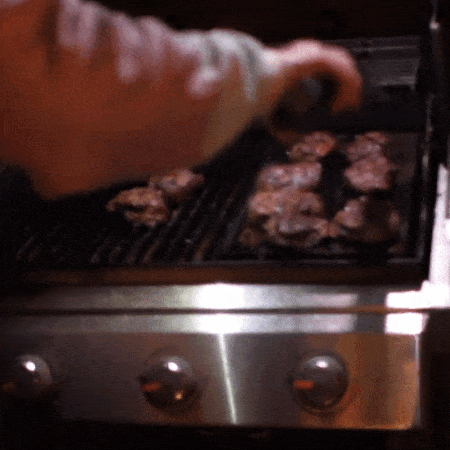
Rails up and rails down are a searing sensation.
Ruth’s Chris and other steak houses give steaks a quick exposure to very high heat before serving. You can do the same with GrillGrates. The set up involves flipping one or more GrillGrate panels over to the flat side. Or use the GrillGrate griddle on a portion of your grill. The process is simple and effective. Grill the steaks at high heat (550-650°F at the GrillGrate) on the raised rails and go for the crosshatch marks as usual. When you are close to your finished temperatures say 5 degrees or so below, move the steak to the flat side or griddle and listen to that sizzle! In less than a minute a side you will achieve more overall browning. This will take some experimentation. Meathead is right – browning is good but so is a little char and sear marks too.
So, it is not necessarily an either / or question about sear marks as posed by Meathead. The answer is actually both! Grill your steak to your target doneness and then if you think you need more sear you can dial in that extra sear and browning just before you plate your steak. Just like the Steakhouses do.
Grilled flavor is a complex equation. Flavor is not just derived from the browning brought about by the Maillard reaction. Drippings play a big role too when they vaporize in the GrillGrate valleys adding another layer of flavor.
Finally let’s look at the 3 most popular methods to grill a great steak with GrillGrates:
1) Hot and Fast is the most common and great for all cuts of meat except thicker steaks. Hot and fast means just that, a very hot grill and a fast cook time. Rails up for bold sear marks is the best set up for GrillGrates with one panel flipped to the flat side if you want to add a quick overall sear before plating.
2) Reverse Searing also known as ‘sear in the rear’ came about from restaurants that slowly precook meats and then hold them at precise temperatures until it’s time to sear them off to serve. In the backyard this is most often done by a low and slow roast either on a pellet grill or at very low temps on charcoal and gas. The steak will not have any Maillard reaction occurring on the surface at these low temperatures. The steak looks grey and unappetizing until it gets a fast hard sear with GrillGrates either rails up for steakhouse sear marks or sear on the flat side for an overall browning. Reverse searing is ideal for large cuts of beef (over 2 inches thick).
3) Sous Vide also popularized by restaurants that slow cook foods in a water bath. Sous Vide has gone mainstream at home with products from companies like Anova and Chef Steps. As with reverse searing, there will be no Maillard reaction with Sous Vide. Sous Vide requires a hot finish to deliver the browning sear for the added flavor and eye appeal- with or without sear marks.
No matter how you sear it, you’re gonna grill your best steak on GrillGrates.
GrillGrate. Eat Well.
– Brad
UPDATE: We had the pleasure of taking the debate to social media. Watch the video below.

